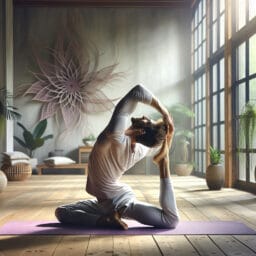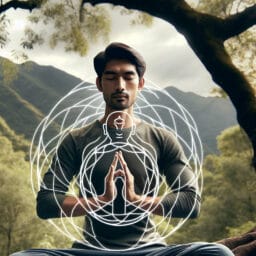Mastering the Bound Angle Pose in Yoga for Improved Flexibility
Table of Contents
Frequently Asked Questions
Q: What is the Bound Angle Pose in Yoga?
A: The Bound Angle Pose is a seated posture in Yoga, where the soles of the feet are pressed together with the knees dropped towards the floor forming a triangular shape. It is also known as Baddha Konasana in Sanskrit.
Q: What are the benefits of doing the Bound Angle Pose?
A: This pose provides numerous health and flexibility benefits. It stimulates the heart and improves overall circulation, aids in digestion, and helps with menstrual discomfort. Most notably, it stretches the thighs, knees, and groin muscles, greatly enhancing flexibility.
Q: How can I perform the Bound Angle Pose correctly?
A: To perform the Bound Angle Pose, start seated with your legs extended. Bend your knees and pull your heels towards your pelvic area. Press your heels together and let your knees drop towards the floor. Keep your back straight and hold the pose for a few minutes.
Q: What are some common mistakes with this pose and how can they be avoided?
A: Common mistakes include rounding of the back and forcing the knees down. To avoid these, ensure that your back is straight by extending your spine. Do not force the knees down but let them drop naturally to avoid strain.
Q: Are there variations or modifications of this pose?
A: Yes, there are variations suitable for all levels of practitioners. Beginners can use props such as blankets or blocks under the knees for support. Advanced practitioners can add a forward bend or even recline backward as a variation of the pose.
Q: Are there any risks or precautions I need to be aware of when performing this pose?
A: People with groin or knee injuries should be cautious while performing the Bound Angle Pose. Always listen to your body and stop if you feel any discomfort. When in doubt, consult with a trained Yoga instructor.
Q: Should I incorporate the Bound Angle Pose into my regular yoga practice?
A: Yes, regular practice of the Bound Angle Pose can greatly enhance your flexibility and provide numerous health benefits. As always, practice with care and respect for your body’s limits.



